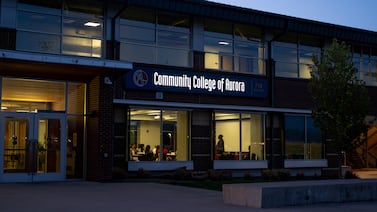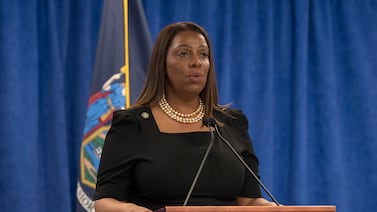When the Jeffco school district expects a food shipment, usually at least one item is missing.
Food services director Beth Wallace said her team typically gets a heads up about the missing products the day before the truckload arrives at the warehouse.
“We ask what they have available, and we usually accept it; otherwise, we will not have food,” Wallace said.
The alternative might cost $4 more per case, but Wallace will take it. When nothing is available, or the alternative doesn’t arrive in time, food service workers dig through the district’s warehouse to find something they can serve.
It’s been a difficult year overall, food service directors told a panel hosted by No Kid Hungry and the School Nutrition Association Thursday morning, but planning for the next school year is also proving stressful.
As they plan for next year, with expected continuing supply chain problems, they want the federal government to continue pandemic-era waivers that have allowed extra flexibility and increased funding for their school meal programs, Wallace and other food service directors said.
The extra funding has been in the form of increased meal reimbursements. Food service directors said the increase has helped pay for the higher cost of food and to increase staff pay.
Warren DeShields, director of food service at Bridgeton Public Schools, a largely Latino district in New Jersey, said if the waivers go away, “then I don’t know how we’re going to stay afloat.”
“Our students really need the food we provide,” he added.
DeShields and other food service directors say that although it takes more work, and often involves food that is not their first choice, they have been able to get food to students.
School districts are seeing higher participation rates, meaning more students are opting for a school lunch than in previous years. In Jeffco, the number of meals served increased to about 45,000 per day, from about 30,000.
Ensuring more students are prepared to learn because they have had a good meal is important, food directors said.
Sometimes securing meals means getting food from different vendors including those without existing contracts. That can mean it comes from farther away and at higher prices.
DeShields said his planning has also meant rotating available food more often. For example, when he gets chicken patties, he might dress them up differently so students don’t feel like they’re eating the same meal week after week.
Food service directors said they’ve seen how families have struggled feeding children during the pandemic.
The flexibility they’ve had to serve meals outside of a traditional lunchroom meant parents had more insight into what their kids were getting to eat. Districts across the country used buses to deliver meals to family homes during remote learning.
“They were surprised at the quality of food and freshness and the variety,” DeShields said.
Students have also been served meals in classrooms, which allows for social distancing and also helps ensure all students have access to the meals.
The higher reimbursement that directors on the panel asked the government to extend has meant districts could pay employees more to attract more applicants during the staff shortage.
Jeffco schools normally operate with about 400 to 450 food service employees, but this year, there are at least 100 fewer, Wallace said. It means there are fewer lines open and less food options for students. The district has also communicated plans to have school staff serve premade meal kits for lunch when no food service employees are available.
Wallace said Jeffco has raised its minimum wage for food service workers to $15 per hour from $13.25. She also said she expects to be able to offer a hiring bonus as early as next week.
Another government flexibility has enabled districts to give free meals to all students, directors said. In Jeffco, where about 28% of the 70,000 students qualify for subsidized meals, Wallace said this year there has been no “food shaming” because no one knows which students qualify for free lunches.
It “has been a wonderful benefit of this program,” Wallace said. “The equity there has just been outstanding.”
Wallace said in Jeffco she’s heard students are grateful for being able to eat lunch every day.
“‘Thank you, miss. I used to be able to have lunch only twice a week; now I can have lunch every day,’” Wallace said a student told her. “I really like when I hear from kids.”






